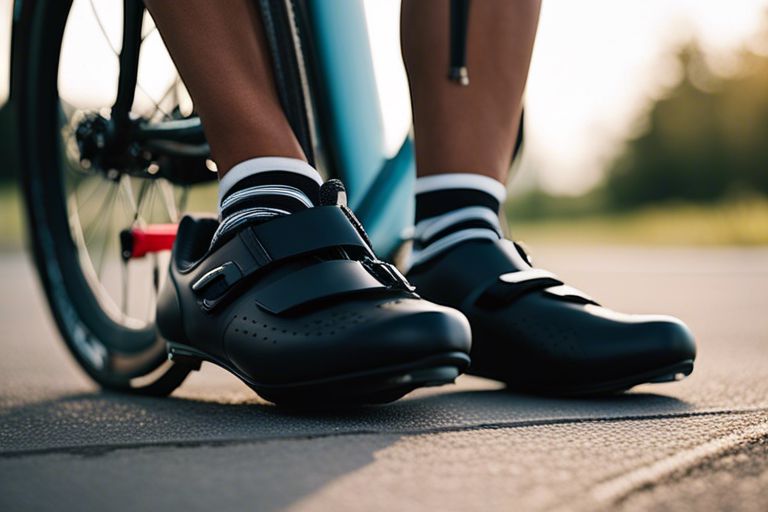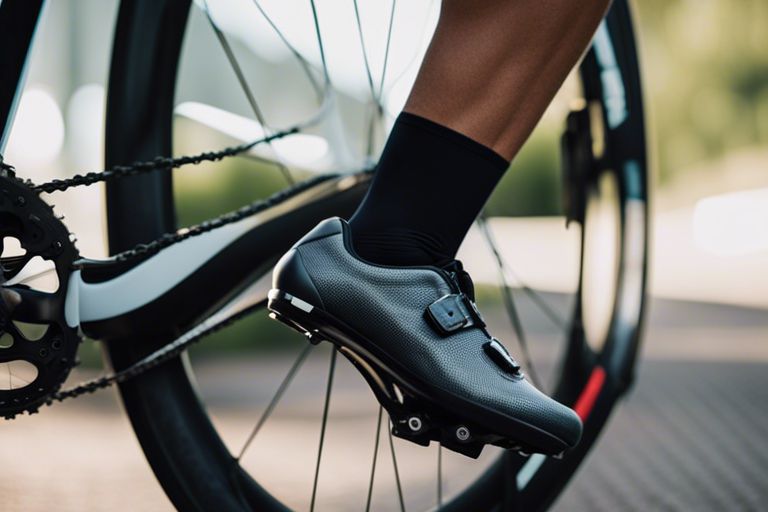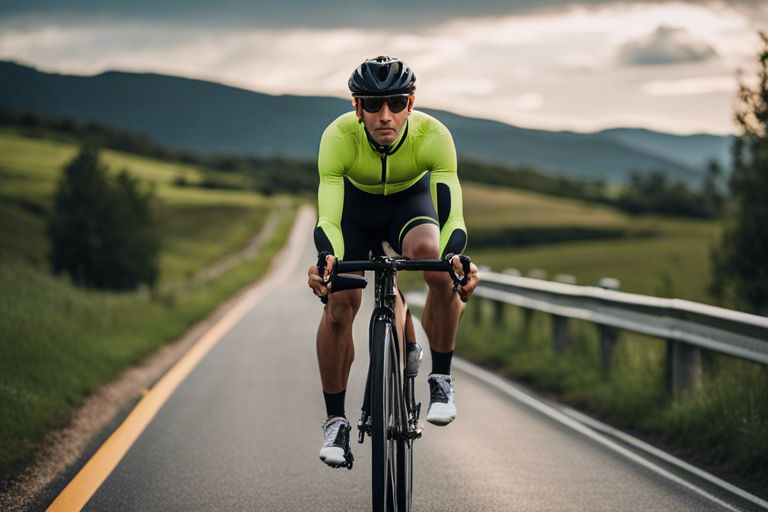You may be wondering, “How tight should cycling shoes be?” Finding the perfect balance between snugness and comfort in your cycling footwear is crucial for both performance and avoiding potential injuries. In this blog post, we will explore the importance of the right fit when it comes to cycling shoes and provide tips on achieving the optimal level of tightness for your rides.
Key Takeaways:
- Snug Fit: Cycling shoes should fit snugly to provide proper support and power transfer while riding.
- Avoid Excess Pressure: Avoid overly tight cycling shoes that can lead to discomfort, numbness, or circulation issues during long rides.
- Room for Movement: Ensure your cycling shoes have enough room for your toes to wiggle slightly to prevent cramping and allow for proper blood flow.

Understanding Cycling Shoe Fit
Importance of Proper Fit
On the bike, proper fit is crucial to performance and comfort. Ill-fitting shoes can cause discomfort, hot spots, numbness, or even injury. A snug but not overly tight fit ensures efficient power transfer and control while preventing foot movement inside the shoe, which can lead to blisters and discomfort.
Anatomy of a Cycling Shoe
Shoe anatomy plays a key role in how well a cycling shoe fits. Understanding the different components such as the upper, closure system, sole, and footbed can help in finding the right fit for your feet. The upper should be snug to hold your foot securely, while the closure system should allow for adjustments to customize the fit. A stiff sole promotes efficient power transfer, and a supportive footbed can enhance comfort and prevent issues like arch pain.
Identifying the Right Shoe Size
Measuring Your Foot
Right from the get-go, it’s important to determine the accurate measurement of your foot for a perfect cycling shoe fit. An ill-fitting shoe can lead to discomfort and even injury during your rides.
Interpreting Shoe Size Charts
Charts help in getting a better idea of how different brands and models run in terms of sizing. It’s crucial to understand that shoe sizes can vary slightly between brands, so consulting the manufacturer’s specific size chart is key in finding the right fit.

Adjusting for Performance and Comfort
Unlike casual shoes, cycling shoes need to strike a delicate balance between being snug for performance yet comfortable for long rides. Proper adjustment is crucial to ensure optimal power transfer, comfort, and injury prevention.
The Role of Insoles and Arch Support
Performance starts from the ground up, quite literally, with the insoles of your cycling shoes. Custom insoles or inserts can provide additional arch support, helping to distribute pressure evenly and prevent hot spots or numbness during long rides. They can also improve pedaling efficiency by aligning the foot correctly, reducing the risk of injuries.
Balancing Tightness and Flexibility
On the other hand, overly tight cycling shoes can restrict blood flow and lead to discomfort or even injury. Finding the right balance between tightness and flexibility is key. Your shoes should be snug to prevent any slippage or hot spots but not so tight that they cause pain or numbness. It’s important to experiment with different adjustments to find the perfect fit for your feet.
Role of Cleat Positioning
Cleat positioning plays a crucial role in the performance and comfort of cycling shoes. Proper alignment can improve power transfer and pedaling efficiency while reducing the risk of knee pain or injuries. Experimenting with cleat position can help fine-tune your comfort and performance on the bike.
The Fastening Systems and Their Impact
Laces vs. Velcro Straps vs. Buckles
Fastening systems play a crucial role in determining the fit and comfort of cycling shoes. Laces provide a customizable and evenly distributed tightening, while Velcro straps offer quick adjustments and easy operation. Buckles offer a secure and precise fit, allowing for efficient power transfer.
Dial Systems: The Boa Closure
To achieve a precise and easily adjustable fit, many cycling shoes are equipped with dial systems, such as the popular Boa closure. This system uses a dial to tighten the shoe evenly, providing a snug fit that can be quickly adjusted on the go. The Boa closure distributes pressure evenly across the foot, enhancing comfort and performance.
Troubleshooting Common Fit Issues
Dealing with Hot Spots and Numbness
Any cyclist who experiences hot spots or numbness in their feet while riding should first check the tightness of their cycling shoes. These issues are often a result of shoes that are too tight, causing restricted blood flow. Loosening the shoes slightly and ensuring the closures are not overly tight can help alleviate these problems. If the issue persists, consider adjusting the position of cleats or insoles for a more comfortable fit.
When to Size Up or Down
One common fit issue cyclists face is determining whether to size up or down when choosing cycling shoes. If your toes are consistently hitting the front of the shoe or if you feel any pinching or discomfort, it may be a sign that the shoes are too small. On the other hand, if your feet are swimming in the shoes or you experience heel slippage, they may be too big. It’s important to find the right balance and ensure a snug but not overly tight fit to optimize performance and comfort.
Troubleshooting fit issues with cycling shoes is crucial to prevent injuries and ensure an enjoyable riding experience. By addressing common problems such as hot spots, numbness, and sizing concerns, cyclists can fine-tune their shoe fit for maximum efficiency and comfort on the bike.

Care and Maintenance of Cycling Shoes
Longevity and Shoe Care
Care and maintenance of your cycling shoes are crucial for ensuring they last for a long time. Proper care includes cleaning your shoes regularly, especially after rides in dirty or wet conditions. Use a damp cloth to remove any dirt and grime, and allow your shoes to air dry completely before storing them.
The Impact of Wear and Tear on Fit
Maintenance of your cycling shoes is not just about ensuring their longevity but also about maintaining the proper fit. Over time, the materials of the shoes can wear down, affecting their stiffness and support. This can lead to a loss of power transfer and discomfort while riding.
Summing up
On the whole, the tightness of cycling shoes is crucial for both performance and comfort. The right fit ensures optimal power transfer and control while riding. However, shoes that are too tight can lead to discomfort, numbness, and even injuries. It is vital to find a balance where the shoes are snug and secure without being overly constricting. Remember to consider factors like material stretch, brand sizing variations, and personal preferences when determining the ideal level of tightness for your cycling shoes.
FAQ
Q: How tight should cycling shoes be?
A: Cycling shoes should fit snugly, with no areas that feel too tight or too loose. Your foot should be comfortably secure in the shoe without any excessive pressure points. It’s important to ensure a secure fit to optimize power transfer and prevent discomfort during your ride.
Q: What are the signs of a properly fitting cycling shoe?
A: A properly fitting cycling shoe will allow you to wiggle your toes slightly, but they should not slide around inside the shoe. The shoe should hug your foot and feel secure, particularly around the heel and midfoot. Make sure there are no areas where the shoe pinches or causes discomfort.
Q: What are the risks of wearing cycling shoes that are too tight?
A: Wearing cycling shoes that are too tight can lead to discomfort, numbness, and even circulation issues. Excessive pressure on certain areas of the foot can cause pain and potentially lead to injuries. Additionally, overly tight shoes can restrict blood flow, leading to numbness and discomfort during longer rides.




